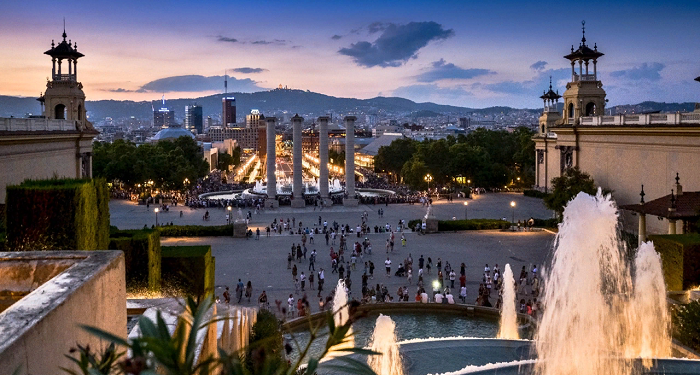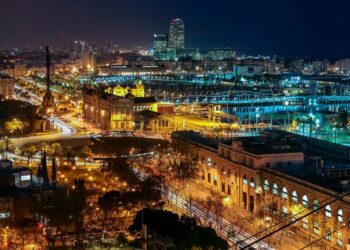Montjuic Mountain plays a huge role in the history of the city. For example, the first remains of Iberians and Laetians were found on its slopes.
Did you know that Montjuic means “Jewish mountain” in Old Catalonian? This name arose due to the fact that in the Middle Ages Jews buried the dead here, so as not to do it on the territory of the city. For some time, urban workers who were building the Poble-sec area lived in barracks on the slopes of the mountain. The area of Montjuic Mountain is so large that not even all residents of the city are familiar with all its interesting corners and each time during a walk they rediscover the mountain. We want to tell you about the obscure corners of Montjuic today.
Montjuic Lighthouse
If you were driving along the Ronda Litoral, most likely you noticed a lighthouse on the slope of Montjuic, which gives light signals. It was built in 1906 and is still operational, but after the construction of the port, it has few functions left, because it is located far enough from the coast.
Parque Joan Brossa with giant musical instruments
This park is a tribute to the surrealist poet Joan Brossa, and it is located on the territory that was once occupied by the Montjuic Amusement Park. Its main attractions are not benches and slides, but giant musical instruments. To make them sound, but they need to walk and jump.
Greek Theater Teatre Grec
This is not an old theater built by the Greeks, but still quite an interesting location, built in 1929 on the occasion of the World Exhibition. To get to it, you need to go through a romantic rose garden with geometric flower beds, gazebos and terraces. The Greek open-air theater is modeled after the Epidaurus Theater, built in Greece in the fourth century BC. And since 1976, a Greek festival has been held here in the summer, which attracts theater, music and circus lovers.
Free climbing area
There is a place on Montjuic where you can do rock climbing in the open air for free. We are talking about the La Foixarda area. There you will find, in addition to rock walls on which you can climb on a rope, also a long tunnel turned into a climbing wall.

























